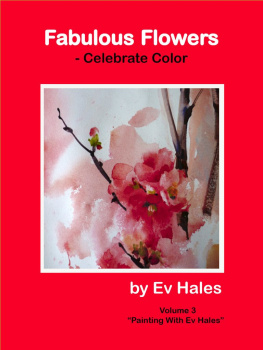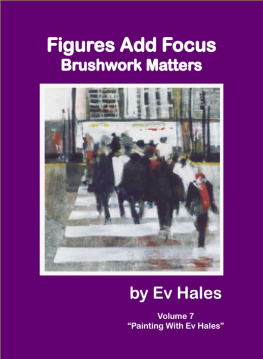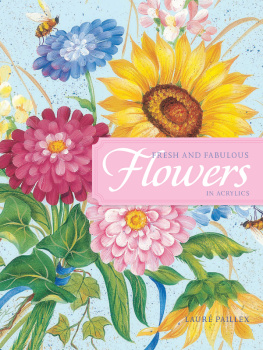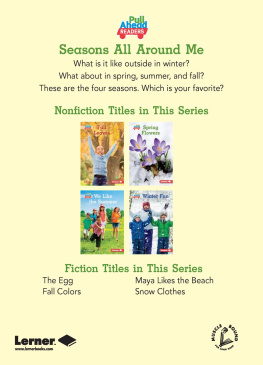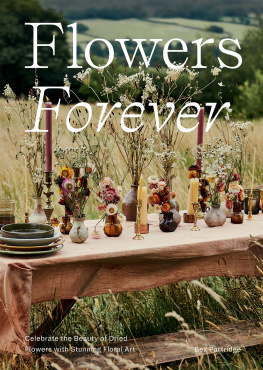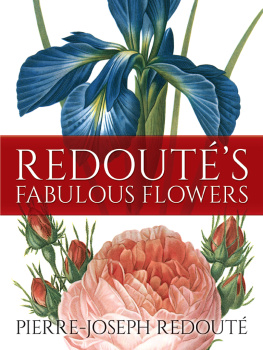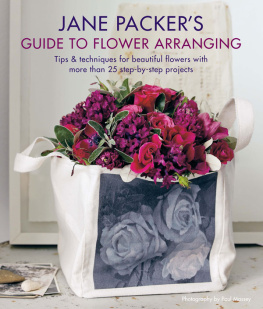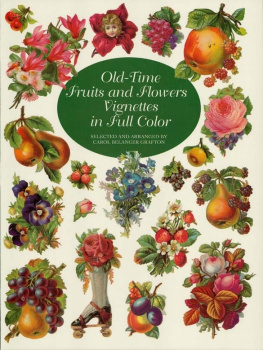Ev Hales - Fabulous Flowers: Celebrate Color
Here you can read online Ev Hales - Fabulous Flowers: Celebrate Color full text of the book (entire story) in english for free. Download pdf and epub, get meaning, cover and reviews about this ebook. year: 2013, publisher: BookBaby, genre: Home and family. Description of the work, (preface) as well as reviews are available. Best literature library LitArk.com created for fans of good reading and offers a wide selection of genres:
Romance novel
Science fiction
Adventure
Detective
Science
History
Home and family
Prose
Art
Politics
Computer
Non-fiction
Religion
Business
Children
Humor
Choose a favorite category and find really read worthwhile books. Enjoy immersion in the world of imagination, feel the emotions of the characters or learn something new for yourself, make an fascinating discovery.
- Book:Fabulous Flowers: Celebrate Color
- Author:
- Publisher:BookBaby
- Genre:
- Year:2013
- Rating:5 / 5
- Favourites:Add to favourites
- Your mark:
- 100
- 1
- 2
- 3
- 4
- 5
Fabulous Flowers: Celebrate Color: summary, description and annotation
We offer to read an annotation, description, summary or preface (depends on what the author of the book "Fabulous Flowers: Celebrate Color" wrote himself). If you haven't found the necessary information about the book — write in the comments, we will try to find it.
Ev Hales: author's other books
Who wrote Fabulous Flowers: Celebrate Color? Find out the surname, the name of the author of the book and a list of all author's works by series.
Fabulous Flowers: Celebrate Color — read online for free the complete book (whole text) full work
Below is the text of the book, divided by pages. System saving the place of the last page read, allows you to conveniently read the book "Fabulous Flowers: Celebrate Color" online for free, without having to search again every time where you left off. Put a bookmark, and you can go to the page where you finished reading at any time.
Font size:
Interval:
Bookmark:
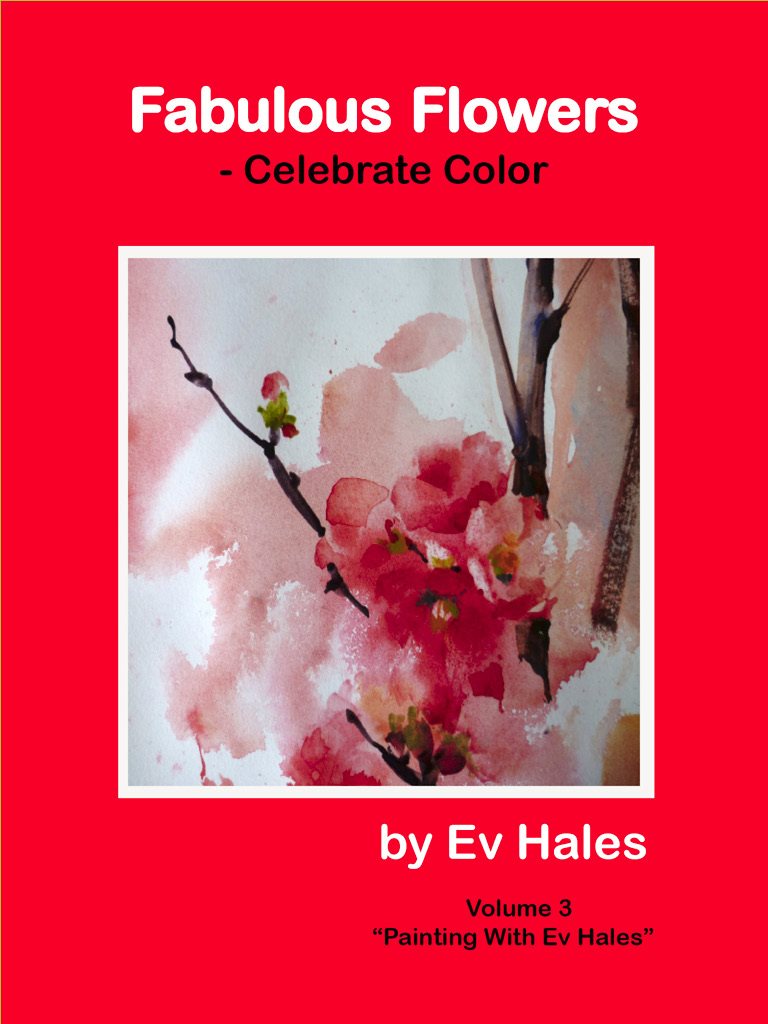

Copyright Ev Hales 2013
All images Ev Hales 2013
No part of this publication may be reproduced in any form without written consent from Ev Hales.
Published by Ev Hales as an ebook 2013
Volume 3 of 10 in the ebook Series
Painting With Ev Hales
All rights reserved.
ISBN: 978-0-9871141-3-6



Flowers are an excuse for outrageous color. Nature creates the most intense, subtle, unlikely color combinations in flowers that enrich our natural world.
Flowers surround us in nature, our homes and our work places. Some of our strongest memories are linked to specific flowers or certain scents - a hint of the smell of sweet honeysuckle, so prevalent in my grandparents day, takes me instantly back to my childhood. The distinctive smell of tomato plants, when my dad would nip the new growth from between the stems to encourage less foliage on the plant, is a strong link to childhood. A bowl of roses will fill a room with fragrance and I used to say I would not paint roses until I could paint one you could smell. I am not sure I am there yet, but I am having great fun trying. Flowers enrich our world on many levels as well as being beautiful to look at.
For thousands of years flowers have inspired artisans with imagery for jewellery design, architectural features, fabric designs, paintings as well as being used by poets and songwriters. An artist can be botanically perfect with their interpretation, wildly abstract or anything in between. Flowers will always be a source for artistic endeavors.
Some people dismiss flowers as being purely for the botanical artist or as a frivolous subject matter. These artists do not know what they are missing. For any serious painter the color possibilities and complexities presented by flowers will add enormously to their understanding and use of color through all their work. Where else can you see a huge range of any hue you care to mention in such a small area as a bunch of flowers? The nuances found across a single hue will keep you mixing for months to try and replicate the clarity and complexity found in nature.
I paint flowers purely for my own pleasure and I rarely exhibit these works. This is not because I do not think of them as serious pieces but more because they are my personal moments.
Flowers are interesting at every stage of their life cycle. There is a sense of urgency because you know in a day or two this stage will be gone as the flower changes. The transient quality of life is inherent in flowers and I strive to capture this. I like to include the imperfections that appear rather than just seek perfection. These imperfections will often have a story of their own to tell. I do not subscribe to the pin the petals in place until I have finished the painting school of floral artists - if the petals fall, so be it, get another flower or paint it minus one or two petals ... or just paint faster.
Flowers herald the seasons in nature. Flowers are most obvious in Spring or when the plant is ready to start the rejuvenation process. Fresh buds appear, flowers develop, fertilization takes place, if the bees are doing their job, petals fall, the seed pod enlarges and the seed matures. The plant continues its life cycle. Some plants flower only once and then the plant dies. Others are perennial or seasonal with an ongoing life cycle. Trees and large shrubs flower and continue to grow until the next cycle. Deciduous trees lose all their foliage in winter as the tree changes its look completely from a mass of green to linear twigs and branches. In Spring the flowers appear, sometimes before the leaves, signaling that a new life cycle has started all over again. If the flowers are bountiful the harvest will be rich, or at least, the potential is there for a very good season. If the flowers are scant then the fruit will be in short supply. Therefore flowers are crucial to our well-being, in more ways than one.
The rhythm of this process is something we register only subconsciously. The connection is getting more distanced as we live in bigger and bigger cities where the signs of nature are not as easy to see.
This cycle offers the artist a year round feast of material for inspiration.
Modern living has changed some of the preciousness of flowers because instead of seeing certain kinds of flowers at a particular time of the year, modern transportation ensures that florists can import flowers from the other side of the world and we can pretend we live in perpetual springtime. Combinations of flowers for still life are therefore more diverse than in the past, when only local seasonal flowers were available to be used.

In the ebook you are reading the potential offered by this fascinating subject is explored. I will develop strategies for seeing the essence of the different kinds of flowers and ways to capture that with simplicity, if that is what you desire. Because flowers really do color our world - color becomes a key issue where I address some of the color issues that are of interest to the artist. Pattern is another crucial element that frees the artist to paint loosely or botanically. Discussion of pattern and how to use it to create instantly recognizable flowers without having to include everything is a key technique that is discussed. From drawing to creativity with color flowers are an unlimited source of inspiration.
The world would be a poorer place without flowers to color our world.


All flowers have a distinctive pattern. This pattern will exist in the flower formation, color, leaf shape and how it grows whether singly or in a group.
I am going to explore some of the patterns of flowers that people paint often. This will demonstrate how to analyze for yourself flowers that interest you. Drawing, designing and painting all add something different to your understanding of the flowers you chose to work with. This analysis of the pattern has nothing to do with different genus because you will find flowers that are incredibly similar even though they belong to a different family. In these instances it will possibly be the leaf or flower color that will define them.
Central radial patterns: something that radiates from a central point. This is possibly the most common pattern. The kinds of centers vary enormously and become a key feature.
Examples include daisies, gerberas, dahlias, chrysanthemums, roses, cornflowers, poppies ranunculas, anenomes, blossom, and so on.
Font size:
Interval:
Bookmark:
Similar books «Fabulous Flowers: Celebrate Color»
Look at similar books to Fabulous Flowers: Celebrate Color. We have selected literature similar in name and meaning in the hope of providing readers with more options to find new, interesting, not yet read works.
Discussion, reviews of the book Fabulous Flowers: Celebrate Color and just readers' own opinions. Leave your comments, write what you think about the work, its meaning or the main characters. Specify what exactly you liked and what you didn't like, and why you think so.

